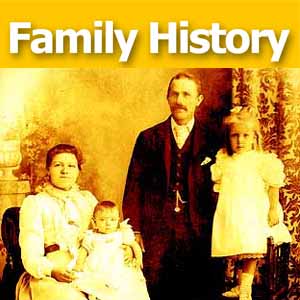Family History Episode 20 – The Genealogical Proof Standard
Originally published 2009. Republished February 25, 2014
[display_podcast]
Download the Show Notes for this Episode
Welcome to this step-by-step series for beginning genealogists—and more experienced ones who want to brush up or learn something new. I first ran this series in 2008-2009. So many people have asked about it, I’m bringing it back in weekly segments.

Episode 20: The Genealogical Proof Standard
In this episode we are going to cover a powerful process for doing your genealogy research. It’s called the Genealogical Proof Standard or GPS.
If you’re new to research you may hear some terms that you’re not familiar with. This is the ideal time to start getting familiar with them because it may save you going back and re-doing some of your hard work later down the road.
If you’re an experienced researcher, you may already have had some experience with the GPS. But even if you have, you likely haven’t heard it quite like this. My very special guest is Mark Tucker, a software architect by day and an avid genealogist evenings and weekend. And it’s safe to say Mark has a passion for genealogy and he brings his computing expertise to genealogy in some pretty exciting ways, most recently by process mapping the Genealogical Proof Standard – the GPS – into a visual aid that will help you navigate your way to a successful family tree. (Update: Mark’s Think Genealogy blog is no longer available.)
In our first segment Mark tells us how he got started using the Genealogical Proof Standard, why he created the GPS map, and what it will do for you to improve your genealogy research. Then he gives us an overview of the Genealogical Proof Standard and the various tools that go along with it.
In our second segment we talk about how the GPS map can be effectively used for breaking down your research brick walls.
What is the GPS?
The Genealogical Proof Standard speaks to the quality of our genealogy research process, as outlined in the BCG Genealogical Standards Manual. BCG stands for the Board of Certification of Genealogists, and it’s an internationally recognized organization that certifies qualified genealogists who meet their standards.
The idea behind the GPS is that it provides standards generally accepted in the field of genealogy research. Historically the GPS has been thought of in conjunction with professional genealogists. But more and more it is being used by family historians everywhere who want to do a quality job of climbing their family tree.
The Genealogical Proof Standard is really like a process map. It maps out the proven steps that a good genealogist takes to answer their family tree questions.
Proof is a fundamental concept in genealogy. In order for your research to really be accurate and dependable, each conclusion you reach about an ancestor must have sufficient credibility to be considered as proven. To make sure that conclusions you come to about your family are accurate they really need to meet standards of the Genealogical Proof Standard (The GPS). The GPS consists of five major criteria:
- You have to be sure that you have conducted a reasonably exhaustive search.
- You need to have complete and accurate source citations.
- You need to do the analysis and correlation of the information that you’ve found. It’s not just enough to find a fact, you have to look at it within the context of all of the fact and make sure that it fits together in a way that really makes sense.
- If that analysis brings to light the fact that there are conflicts when you put your data together, then your next step is to go back and work to resolve any conflicting evidence. You’ll want to look for additional resources to solve the question at hand.
- You need to be able to write a sound, reasoned, and coherent conclusion. If you can summarize your findings in a way that makes sense and you can show your proof you know that you’re in good shape and your hard work meets the Genealogical Proof Standard.
The GPS is not just a tool for professional genealogists, but it’s also a tool for you and your research. It actually makes a lot of sense, and it’s pretty simple when you break it down into the 5 basic steps:
- Conduct a reasonably exhaustive search;
- Document complete and accurate source citations;
- Analyze and correlate all of the collected information;
- Resolve any conflicting evidence;
- Write a sound reasoned, and coherent conclusion.
GPS Resources
Genealogy Standards by the Board for Certification of Genealogists, now updated in a 50th anniversary released in 2013.
The Historical Biographer’s Guide to the Research Process Quicksheet, a laminated quick reference guide by Elizabeth Shown Mills.
“Genealogy GPS: Keeping Your Family Tree Research on Course” by Genealogy Gems Contributing Editor Sunny Jane Morton for Family Tree Magazine. This is a digital download that includes an interview with Elizabeth Shown Mills.




